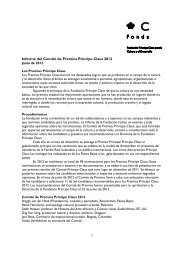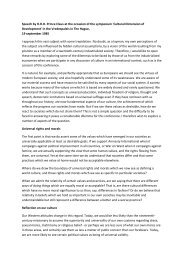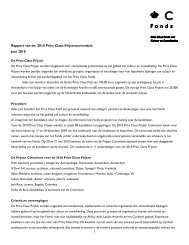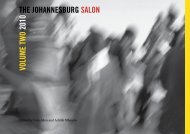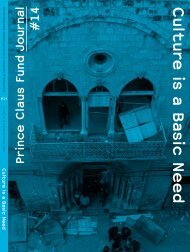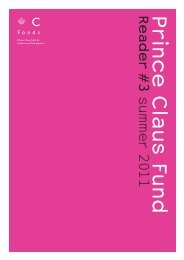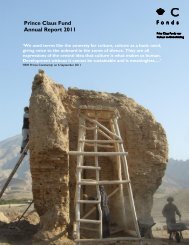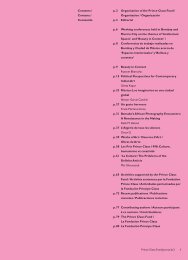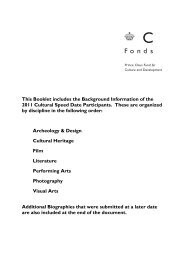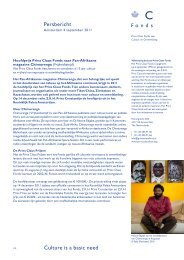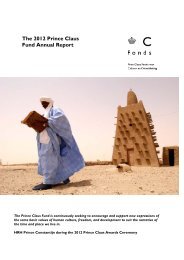30r364 boek.qxd:awards book 11 - Prince Claus Fund
30r364 boek.qxd:awards book 11 - Prince Claus Fund
30r364 boek.qxd:awards book 11 - Prince Claus Fund
Create successful ePaper yourself
Turn your PDF publications into a flip-book with our unique Google optimized e-Paper software.
which Li both criticised and admired, can be traced back to Tao Yuanming (365-427), a literaryfigure of the Eastern Jin dynasty. In 2000, Li decided to escape from the crowded scene of Chineseart. His original plan was to live quietly in a village, away from the city. However, the villagehe chose, Songzhuang, did not, as imagined, turn into his ‘land of peach blossoms’, an earthlyparadise. Instead, with more and more artist immigrants, the village soon became a new assembly,offering Li fresh opportunities and stimulating ambitious agendas, which at the same timeundermined his attempt to be a recluse.If contemporary Chinese art was given birth in the revolutions 30 years ago, then today itsdramatic expansion is largely driven by economic power. Negotiating with the local government,Li has been leading the new development of Songzhuang village as one of the largest art districts inChina, including hundreds of studios for both established and emerging artists, and the 5,000-square-metre Songzhuang Museum, which opened in 2006. To Li, the Songzhuang project is notjust curatorial, but also an exploration of an alternative system, which is expected to createthe power to challenge government strategy and economic force, and to develop contemporaryart for everyone.Li Xianting is respected as the ‘godfather’ of contemporary Chinese art. Yet, he would rathersee himself as an ‘art squire’ at Songzhuang, to continue his unique insight and scholarship,together with his courage and love.60 2008 <strong>Prince</strong> <strong>Claus</strong> Awards



